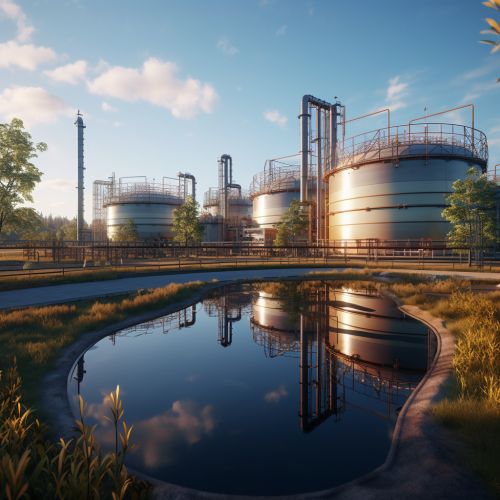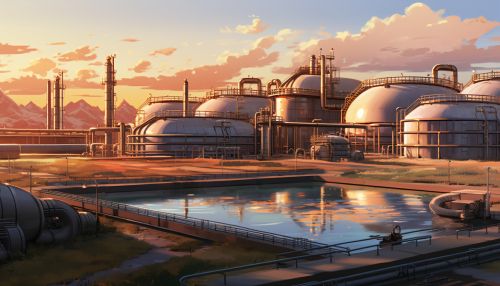Wastewater
Introduction
Wastewater, also known as sewage, is any water that has been affected by human use. It is a by-product of domestic, industrial, commercial or agricultural activities. The characteristics of wastewater vary depending on the source. Types of wastewater include: domestic wastewater from households, municipal wastewater from communities (also called sewage) and industrial wastewater from industrial activities.
Sources of Wastewater
Wastewater is generated from various activities and sources. These can be broadly categorized into three groups: domestic or sanitary, commercial and industrial, and stormwater runoff.
Domestic or Sanitary Wastewater
This type of wastewater is generated from residential and commercial establishments. It includes wastewater from bathrooms, kitchens, and laundries. Domestic wastewater is typically composed of 99.9% water and 0.1% solids.
Commercial and Industrial Wastewater
Commercial and industrial wastewater is generated from activities such as manufacturing, food processing, vehicle servicing, and commercial laundry services. This type of wastewater can contain a variety of pollutants, including heavy metals, organic compounds, oils and greases, and solids.
Stormwater Runoff
Stormwater runoff is generated when precipitation from rain and snowmelt flows over land or impervious surfaces and does not percolate into the ground. As the runoff flows over the land or impervious surfaces (paved streets, parking lots, and building rooftops), it accumulates debris, chemicals, sediment or other pollutants that could adversely affect water quality if the runoff is discharged untreated.


Wastewater Treatment
The primary goal of wastewater treatment is to remove as much of the suspended solids as possible before the remaining water, called effluent, is discharged back to the environment. The treatment of wastewater is part of the overarching field of sanitation. Sanitation also includes the management of human waste and solid waste as well as stormwater (drainage) management.
Preliminary Treatment
The first stage of wastewater treatment is known as preliminary treatment. This stage includes screening to remove large items and grit removal to protect the downstream processes from abrasion or clogging.
Primary Treatment
The second stage of treatment, primary treatment, involves the removal of organic and inorganic solids by sedimentation. This is achieved using a series of physical processes including sedimentation tanks.
Secondary Treatment
Secondary treatment is designed to substantially degrade the biological content of the sewage. This is achieved through microbial processes in aeration tanks followed by secondary sedimentation tanks.
Tertiary Treatment
Tertiary treatment, also known as advanced treatment, is the final cleaning process that improves wastewater quality before it is reused, recycled or discharged to the environment. This stage removes remaining inorganic compounds, bacteria, viruses, and parasites.
Wastewater Management
Wastewater management involves the collection, treatment, and disposal or reuse of wastewater. The main objective of wastewater management is to protect public health and the environment.
Wastewater Collection
Wastewater collection systems are designed to transport wastewater from the source to the treatment plant. The system includes a network of pipes, pumping stations, and treatment facilities.
Wastewater Treatment
Wastewater treatment processes are designed to achieve improvements in the quality of the wastewater. The treatment process may include physical, chemical, and biological treatment methods.
Wastewater Disposal or Reuse
After treatment, the wastewater (now called effluent) can be safely discharged to the environment or reused for various purposes such as irrigation, industrial cooling, and toilet flushing.
Environmental Impact
Improperly managed wastewater can have a significant impact on the environment. Pollutants in wastewater, such as nutrients and pathogens, can harm aquatic life and contaminate drinking water sources.
